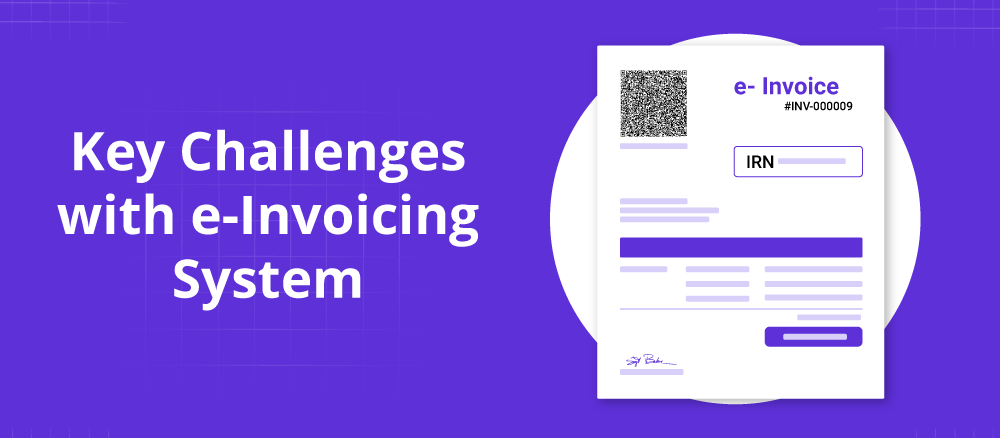
Photo by Mikhail Nilov:
e-Invoicing was introduced on October 1, 2020, for businesses with a turnover of over Rs.500 crore. As per the recent notification, the business turnover limit to generate e-invoices for B2B transactions has been reduced to Rs.5 Cr from the previous Rs.10 Crore. This means businesses with an annual turnover of more than Rs.5 Crore in any previous financial year from 2017-18 must generate e-invoices. In this article, we will look into some of the challenges with the e-invoicing system.

Challenges Faced with the e-Invoicing System
Integrating with ERP Systems
The first challenge with the e-invoicing system is integrating the current ERP systems with the Invoice registration portal (IRP) or GST Suvidha Provider (GSP) or Application Suvidha Provider (ASP) for a smooth flow of e-invoice data to IRP and then back to ERP through the API provided by GSTN. Most businesses use customisable ERP systems that may or may not be compatible with the e-invoice schema.
ERP system integration may be optional for small businesses as IRP provides free online and offline tools to generate e-invoices. However, businesses with large volumes of invoices cannot rely on these tools and thus require ERPs or billing software integrated with IRP.
B2B and B2C Invoices
The next challenge is to sort B2B and B2C invoices from a stack of invoices. e-invoicing applies only to B2B, not B2C invoices. B2B invoices require GST e-way bills and e-invoices, whereas B2C invoices require e-way bill generation whenever required. Sorting these invoices is essential and needs automation; otherwise, much time and effort will be spent.
e-Invoice Cancellation and Amendments
The other challenging aspect is cancelling or making amendments to e-invoices. The e-invoice system does not allow partial cancellation and needs complete cancellation of e-invoices. e-Invoices can only be cancelled on the IRP within 24 hours of generation. After that, they can be cancelled on the GST portal. A new e-invoice cannot be generated with the previous invoice number. In case of any error, it is essential to revise the invoice number to fix it and then raise a new e-invoice on IRP.
Reconciling e-Invoice Data
It is challenging for taxpayers to reconcile e-invoice data, e-way bill data, and GSTR-1 returns. Even though e-invoice data is auto-populated to the e-way bill and GSTR-1 return, it is also recommended to reconcile data on these portals to avoid any error or mismatch in data.
Non-Applicability of e-Invoicing on B2C Transactions
Under the e-invoicing system, a business with a turnover of 5 crore needs to generate e-invoices for all the B2B transactions. B2C invoices are not included in the e-invoicing system, so maximum fraud happens when generating these invoices.
Diverse Workflows for Processing Additional Documents
Lastly, e-invoicing applies to B2B invoices and export purchases, which requires a separate workflow for delivery challans, bills of supply, and other similar transactions. So, creating a new and different workflow is time-consuming.
Conclusion
No doubt, the implementation of e-invoicing has brought about significant change in the invoicing process. However, these challenges can be resolved by understanding these concerns and adopting appropriate solutions. Businesses can use e-invoicing software to optimisework flows, ensure compliance, and stay ahead in an increasingly digital business environment.
